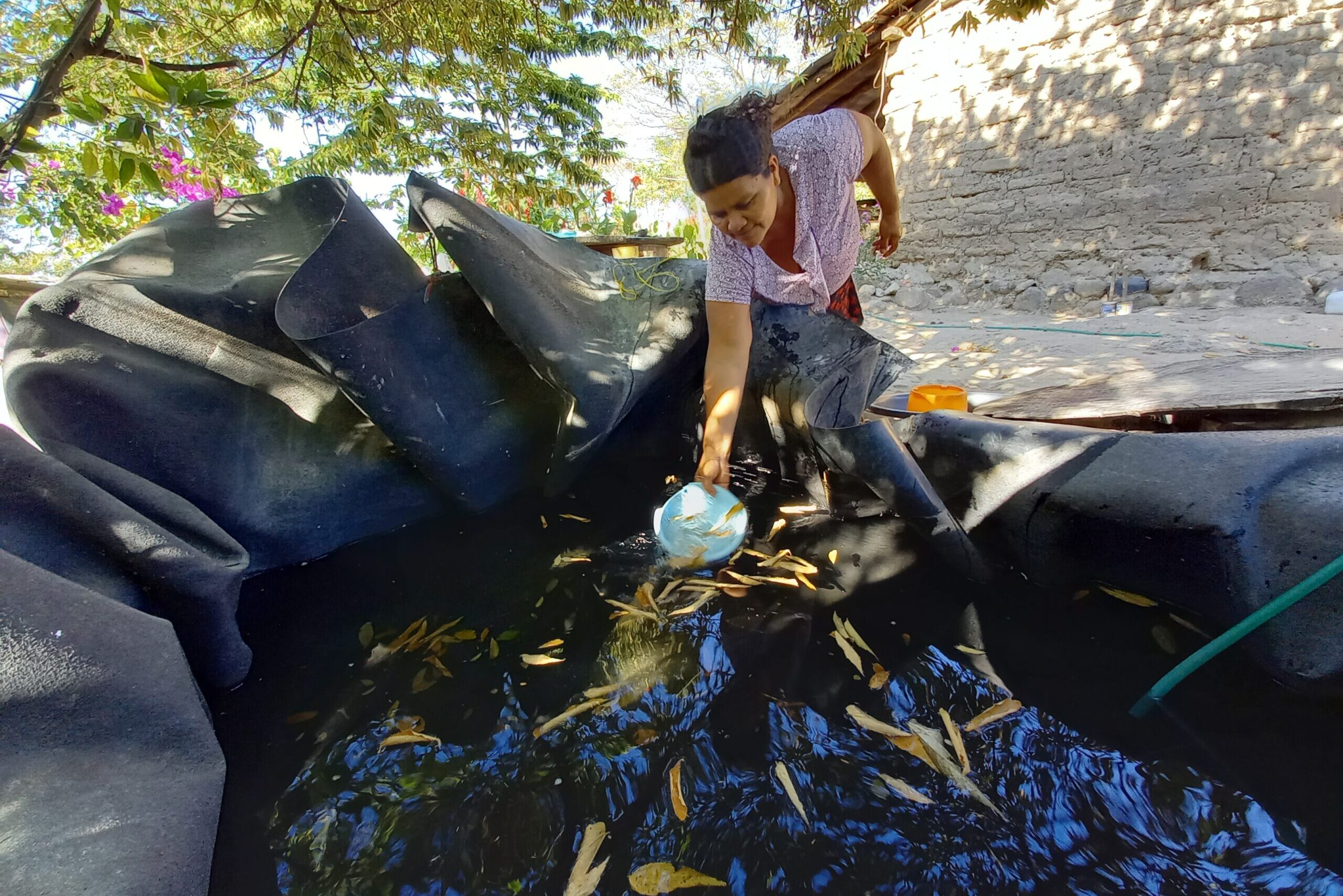Two communities, same reality: no water service
The arrival of the SARS-CoV-2 or COVID-19 virus accentuated the water service problem, and showed that not having access to the vital liquid is one more fiber in the robust muscle of structural inequality in Central America.
Story by Andina Ayala, Nancy Hernández and Omar Martínez
Washing hands became a fact of discrimination in Guatemala and El Salvador, while for some access to water is effortless, for communities without drinking water service, it means greater risk of contagion. Without recognizing the human right to water, there are no strong sanctions for violations of this right. Central American countries are similar in social, economic and legislative aspects, as well as in the absence of a Water Law.
The realities of the district of Nejapa, in El Salvador, and Santa Cruz Chinautla, in Guatemala, testify that in the web of interests over water, the States opt for benefiting sectors with power. The legislative agendas leave out those people, including children, who daily carry on their bodies any type of container to get water. The vast majority, without a fixed income, pay for a service they do not receive, and must stretch their few bills to buy the liquid from other distributors such as commercial pipes, because ‘without water there is no life’.
Nejapa
It is a district located in the most important aquifer in the department of San Salvador, its importance lies in that it supplies the surrounding district. Located half an hour from the capital, there the flowering cane fields predominate before the cornfields or any other crop. It is a rural zone endowed with water sources, at risk from new housing and commercial projects. While the economic powers such as the sugar mills, the Industries La Constancia (ILC) bottling plant and the real estate companies are asserting their right to water, the inhabitants have to frequent the springs because despite having a faucet in their homes and paying a bill every month, the water does not arrive.
There are some exceptions such as the case of Heidi Guerrero, inhabitant of Las Marías 2, who has the opportunity to fill jugs, barrels, bottles and sometimes a part of her ‘pila’ (large container, made of stone, masonry or other material, into which water falls, is poured or stored), between 2 and 3 o’clock in the morning, once or twice a week.
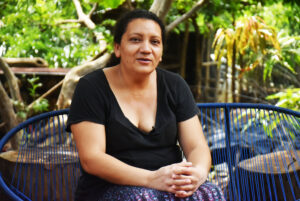
Heidi has always paid the $4.25 bill because she is afraid to pay the $3.00 per month late payment.
Heidi has had potable water service for five years. She went four months without a drop from her faucet, one of the many times without water, but she has always paid the $4.25 bill because she is afraid to pay the $3.00 per month late payment. When she has no water, she pays $8.00 a week for four barrels of water, the cost per month could reach $40.
The National Administration of Aqueducts and Sewers (ANDA) distributes drinking water in the country, but this autonomous institution does not guarantee efficient access to the liquid. “The problem of this hamlet (Marías 2) is repeated in all rural areas of Nejapa,” described Elida Hernández, who was a promoter and member of the Territorial Unit of the district’s mayor’s office for three years (2018-2020).
“ANDA do not had an efficient drinking water service”. It was up to the mayor’s office to buy water pipes to supply these people who pay these water bills that do not reach them,” Hernandez stated weeks before being fired from the district by the new administration.
The last three years, especially in summer, even the natural water sources have dried up. Elida has presented the problem to ANDA, the answers were always the same: “There is a damaged valve”, “Pipes are being fix”, “The service will soon be restored”. There are also other towns where the pipeline does not reach because of the poor condition of the streets.
In Nejapa the ANDA should supply the people, however, due to the lack of coverage in the northern part of the district, a project between the mayor’s office and the Spanish cooperation was launched: the Municipal Water System of the San Antonio River (SMARSA), which was created 20 years ago to benefit 700 families in seven District of the district.
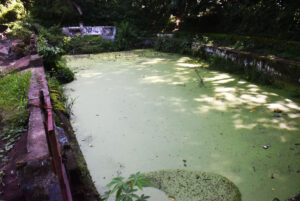
Nejapa´s water treatment plant.
SMARSA is not self-sustainable due to the economic conditions of the families; currently the district covers the repair and maintenance costs. The mayor of Nejapa, Adolfo Rivas Barrios, explains that this project is “ambiguous in its operation”, however, he assures that “if the system did not exist, he would not have the power to operate one of the wells that are accounted for in the district”. It is the only one where the district decides.
The families pay $7.45 for this service, it is a fixed rate and unlike ANDA, they receive water every day. One of the beneficiaries, Estebana Flores, 79 years old, who has lived all her life in El Bonete district, confirms that for 15 years they have received water every day, although only in the mornings, unless the pipe is ruined or the well is washed, in which case the pipe arrives to supply water. SMARSA supplies this District through a community system whose main source is a well and storage tank.
In Nejapa, the sugar cane crops, which need 3,894.80 cubic meters of water per acre, do not lack irrigation. Neither does La Constancia, the bottling plant that has been operating since 1994. It is a paradoxical reality because the communities do not have access to water when they live in an aquifer that produces a large amount of liquid.
The cost to have the resource in their homes is high when compared to the rates in other areas, such as San Salvador, which are around $2.29. The future for these communities becomes even grayer if one takes into account that in El Salvador there is no legal framework that establishes as a priority the distribution to the social sectors, before the industrial and commercial ones.
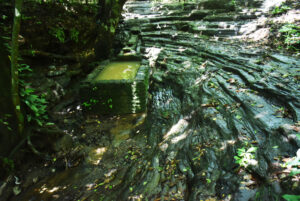
On June 10, President Nayib Bukele informed through his social networks that he would send to the Legislative Assembly a proposed Water Law, which could take up to three months to be approved. The document was sent on July 18 with the title “Ley General de Recursos Hídricos (“General Law of Water Resources”) and will be analyzed by a commission working pro bono, and not by the Environment and Climate Change Legislative Commission that filed the project that was under discussion. This action has been questioned because for the first time in 15 years a consensus was reached in the discussion of the law, the Commission of the 2018 -2021 legislature reached agreement for 111 articles of the 160 that the project had. They even agreed on the structure of the governing body, its functions and who would be part of it.
Regarding the Executive’s proposal, different environmental and civil society organizations requested that the bill go to popular consultation, but the president of the Legislative Body said that the request would not be taken into account. The different sectors of civil society are awaiting the bill’s approval and hope that social access will be prioritized over private access. However, for Carlos Flores, member of Ecos El Salvador and Foro del Agua, it is easy for the new Assembly to pass a law, but it is questionable what interests it responds to.
“Now with the idea of demonstrating that ARENA and the Front were partners and did nothing. The question we must answer is if the interests that were there before Nayib came to power have changed. For me, it is the same decision that Arena had”.
Santa Cruz Chinautla
─ “When I was a child, I used to come to wash in the “pilas” here with Don Pancho or wash in a little well, and we would carry water to drink. Because water only came in once a month,” recalled 39-year-old Aracely.
─ “Before, there were water faucets in the streets for people because we didn’t have our own water in the houses,” said 52-year-old Alicia Escalante, joining the conversation.
─ “But now we are more screwed up because all those little water faucets were taken away, so now if you want to go to a little well to bring a jar of water, they charge you twenty-five cents and if you go with a lady who has a well, they charge you one quetzal per jar and the barrel of water here is worth seven quetzals,” Aracely replied.
The average family in Santa Cruz Chinautla is made up of six people. For the most basic needs, a barrel or a barrel of water (220 liters) is not enough, this, with luck, could supply, with limitations, the midday jobs such as washing dishes, cooking and cleaning. The families of Santa Cruz Chinautla and Distrivt Pila Seca, generated two projects of distribution of the liquid, from a small water source. Aracely Rodas tells firsthand how they managed the alternative water project for the Pila Seca Distrivt. It took them a year and two months to make it a reality, a product of their own hands and investment of time and money.
“This water is private because they pay the plumber, the light, and the lease among all the neighbors. It was started in June 2019 and inaugurated in September 2020. The project is managed by the community, we receive once a week, but we fill up to 8 barrels per family. To float the project, we need Q5,425 equivalent to US$724 per month.” Sometimes they are in debt when one of the 55 families that are part of the project does not pay. Aracely will continue to work for her community and so that her daughters do not carry water as she did in her childhood.
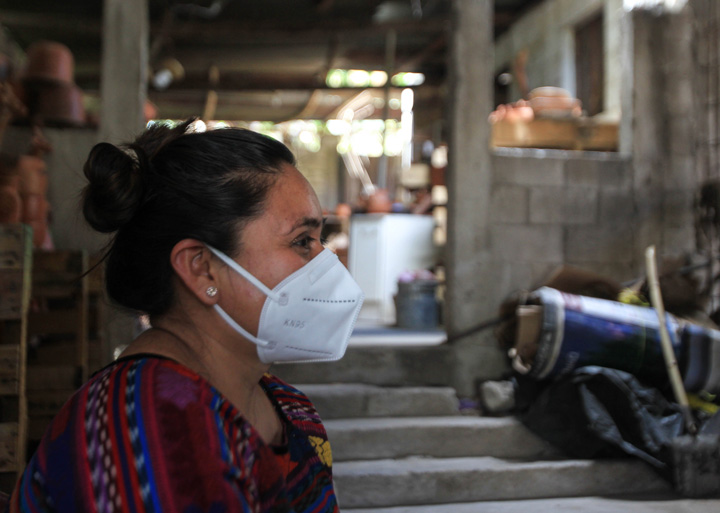
She is one of two women involved in the administration of the project. The members of the water committee are aware that they are helping to mitigate the situation of a small number of families, so they will continue to demand that the district guarantee the service and that the human right to water becomes a reality.
According to the Human Development Index (HDI), people living in extreme poverty in Guatemala have approximately two dollars a day. In Chinautla, as Alicia Escalante, an inhabitant of the central Distrivt of Santa Cruz, pointed out, a barrel of water costs Q12.00, equal to $1.6 dollars. This is more than half of the daily budget that the poorest people have to survive.
The World Socio-Ecological Index (ISEM) published by the Guatemalan university Rafael Landivar, records that the Poqoman population of Chinautla has a score of 9.5/10 of extreme poverty, a population of 114, 752 inhabitants. Being located 12 kilometers from the capital of Guatemala, the largest in Central America, has not brought major benefits to Chinautla. Neither has the fact that the district has mineral wealth such as river sand and pebbles, mainly. Selecto (a type of cement) and white sand are extracted from the mountains. Legally there are nine exploitation licenses and two hydroelectric plants in a territory of 56.2 square kilometers. These same mountains have a clay deposit that produces a very special ceramic, extracted in a traditional way.
Despite the fact that eight years ago, Chinautla’s pottery, its knowledge and techniques were recognized as intangible heritage of the nation, the state and municipal governments do not provide support to the production of pottery that women have been making with ancestral techniques since before the Spanish colonization. Much less, it can be expected that the authorities solve the right to water, which is used for the production of pottery pieces and therefore the survival of the families dedicated to it.
“Being so close to the capital, the community does not have access to good markets. There seems to be a governmental intention to segregate the population,” commented Carlos Sum, an agronomist engineer and business consultant who visits Chinautla. This same segregation is evident in the infrastructure, which changes abruptly from urban to rural desert. There are stretches of the road that are made of dirt, paradoxically in a place where construction materials are extracted.
Santa Cruz has a degraded and abandoned appearance. A large part of the Chinoutleca population sells its labor force to the capital, but in low-paying jobs. Some women work as housekeepers, but with the COVID-19 pandemic many lost this income, as was the case of Aracely Rodas, a community leader and defender, who has suffered most of her life due to the lack of water.
Inadequate access to water contributes to the deterioration of Poqomam life and culture. Efficient and potable distribution is the responsibility of the district of Chinautla, currently led by Liz del Cid Medrano. This is her second four-year term and according to the inhabitants she has not shown any interest in solving the problem. Nor has her uncle, Arnoldo Medrano, the previous mayor, provided a solution to the problem. According to judicial investigations, the former mayor has been accused of multiple cases of corruption. After 17 years as mayor (1998-2015), he only left the district because he did not get his severance pay. In 2017, the International Commission Against Impunity in Guatemala (CICIG) revealed how the clan that co-opted Chinautla operated.
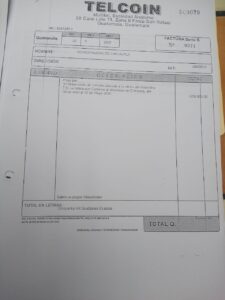
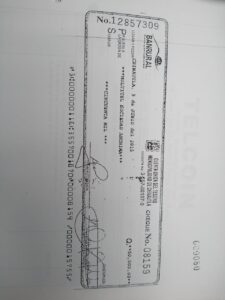
Alicia and Aracely, two generations testify that the district has not fully guaranteed this right, they explain that the problem worsened when “the district transferred a payment of Q50, 000.00 ($6,478.34) as a lease to the owner of the land, Mr. Luis Ernesto Montoya, but in 2019 the mayor had stopped doing so,” said Aracely.
That same year, community leaders investigated and discovered that they no longer had permission to use the spring known as Borbollón, which has provided water to the Central and Pila Seca District for decades, long before someone decided that it was private property. The water spring is inside the property that belongs to the Montoya family, who wanted the community to make the monthly payment. As a result of this, in 2019, the villagers opted to close the streets for three days, an action that directly affected the businesses of the sandboxes, since the mobilization of the trucks was prevented.
In times of scarcity, Aracely Rodas paid up to Q400.00/ $53 USD per month, not counting the time and physical effort involved in hauling water. According to the population, the mayor has isolated them because they are not part of her list of voters. We visited District El Durazno, located seven kilometers from Santa Cruz, where it is assumed that the improvement projects of the mayor Medrano do arrive. But the problem of the water is repeated even there. In El Durazno, residents say they receive water only once a month because the district prefers to sell it to other places rather than guarantee service.
“They normally take the water here and the district sells it to other places, that’s why there is no water here every day. Another thing is that the pipes are broken all the time. When there is a leak, dirt gets in there. When they fixed this road, they turned off the water. It comes on Wednesday and Saturday. But it is pure coffee, it comes dirty, dirty. Even if it doesn’t come, everyone pays for water,” said Roberto López, a local resident.
In El Durazno few want to talk about the municipal administration for fear of reprisals, which is why some admire the leadership that has been formed in Santa Cruz Chinautla, where the local indigenous authorities of the District Pila Seca and Santa Cruz Chinautla, initiated a legal action against the district. According to their testimony, the Montoya’s have had ties with former mayor Medrano. An attempt was made to consult Liz Medrano to find out her position on the district’s obligations to guarantee water, the operation of the nine sandpits in the area and the investment she has made in water distribution and sanitation, but Edith Hilario, her secretary, denied the interview.
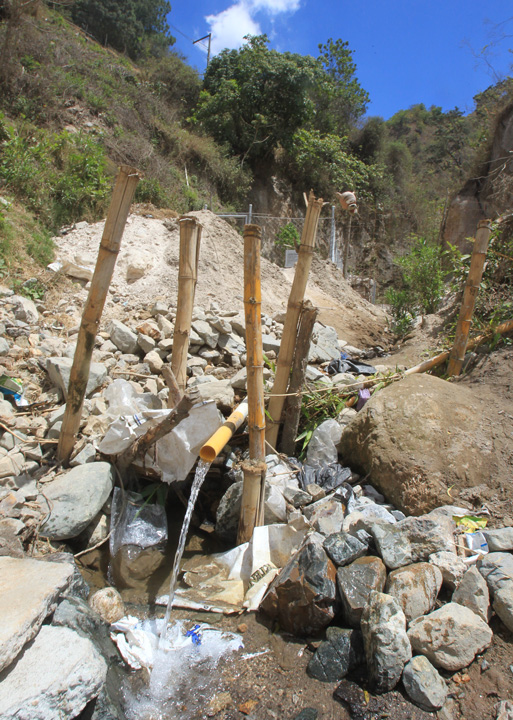
The families of Santa Cruz Chinautla and District Pila Seca, generated two water distribution projects, from a small water source. Aracely Rodas tells firsthand how they managed their alternative water project for the Pila Seca District. It took them a year and two months to make it a reality, but it is a product of their own hands and pockets. “This water is private because they pay the plumber, the light, and the lease among all the neighbors. It was started in June 2019 and inaugurated in September 2020. The project is managed by the community, we receive once a week but we fill up to 8 barrels per family. To float the project, we need Q5,425 equivalent to US$724 per month.”
Sometimes they are in debt when one of the 55 families that are part of the project does not pay. Aracely will continue to work for her community and so that her daughters do not carry water as she did in her childhood. She is one of two women involved in the administration of the project. They are aware that their water committee helps to mitigate a small portion of families, so they will continue to demand that the district guarantee the service and that the human right to water becomes a reality.
This report was produced with the support of the International Women’s Media Foundation (IWMF) as part of its “Adelante en América Latina” initiative.
